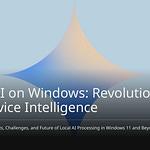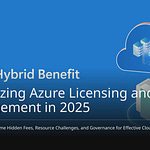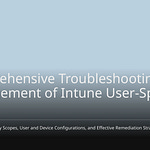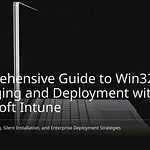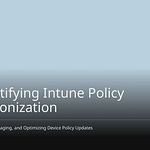Making smart applications is increasingly challenging. Data is often dispersed, which significantly hinders AI effectiveness across various industries. For instance, nearly half of manufacturing companies face data issues, making it difficult to leverage AI with their legacy computer systems.
Microsoft offers a solution to these problems with Azure AI Fabric. This platform unifies everything, making AI more efficient and faster. It integrates a wide array of AI tools within the Azure cloud, leveraging robust cloud infrastructure to create an optimal environment for building and scaling AI applications. This exemplifies the power of cloud AI convergence.
Key Takeaways
Azure AI Fabric gathers many AI tools. This makes building AI apps simple. It also makes using them faster.
This platform helps businesses work better. It saves money. It keeps AI projects safe.
Azure AI Fabric uses ‘cloud AI convergence.’ This joins cloud tech and AI. It creates a strong system.
The platform helps make AI models quicker. It also helps use them fast. This is for real-world tasks.
Azure AI Fabric offers advanced AI to more people. It helps teams share data safely.
Why Cloud AI Convergence is Important
Problems in Making AI
Companies face big problems when making AI today. Many businesses have systems that don’t talk to each other. Their data is not good. They also don’t have enough computers. These things stop them from using new AI tools well. For example, using too many different tools makes it hard to connect them. It also makes them hard to keep working. This slows down making new things. It also makes things less good. Developers also say they trust AI less. This means people don’t use AI tools as much. It also makes them less reliable. Making AI needs a lot of computer power. This can make things slow. It can also cause problems when suggesting code. It also affects testing.
Also, developers get too much to think about. They have to handle many AI tools. They also deal with complex models. It’s hard to see how AI systems work. This makes it hard to fix them. There is also a big gap in skills. Many companies hire new people. They don’t train the people they already have. This means new workers take a long time to learn. It also means AI experts can’t easily share what they know. Using AI without good security is risky. It can let bad data into systems. This can cause big problems for the company. Buying tools that don’t grow with the company is also bad. It leads to AI projects that don’t connect. This makes AI investments less valuable.
What is Cloud AI Convergence?
Cloud AI convergence is a smart way to work. It brings together cloud tech and AI. This creates one good place to make and use AI. This way of working has key features. Cloud companies offer many ready-made AI services. They also offer APIs. This makes making things much faster. It changes custom work into simple API calls. These cloud systems are good at connecting AI. They link AI with how data flows. They use strong API management. They also use MLOps integration. This turns AI tests into real working systems.
Powerful computing is another main part of cloud AI convergence. Cloud companies have special computers. These are made for AI work. They have GPU/TPU clusters. These give much better performance. You can’t get this with regular computers. Cloud-native systems started MLOps. They offer tools to track tests. They also have model registries. They automate deployment. This makes AI development into strong production systems. Cloud places also let people work together on AI. They have shared spaces. They also have central model registries. This helps different teams work together. Hybrid cloud setups mix security. They use on-premises systems for private data. They also use public clouds for training. They use them for peak inference loads. This gives a great base for company AI.
Azure AI Fabric: A Unified Ecosystem
Core Components
Azure AI Fabric gives one place to work. It uses Microsoft Fabric and Azure AI Foundry. These power AI/ML features. Azure AI services make AI easy to use. These include Azure OpenAI, AI Search, AI Speech, and Content Safety. This group was called Azure Cognitive Services. It now shows many products. Azure AI services are for all users. They are easy to start using. Azure Machine Learning is for data scientists. It helps them build special solutions.
The Azure OpenAI service works with SynapseML. This lets you use Apache Spark. Spark processes many prompts with OpenAI service. This makes prompting workflows bigger. It goes from a few examples to large datasets. This happens in Microsoft Fabric. Azure AI, with Azure Machine Learning, works well together. It works with other Azure services. This makes one platform for AI development. Developers build strong and safe AI applications. They use existing Azure infrastructure. This connected place makes AI development simpler. It also makes deployment better.
Data Integration and Management
Azure AI Fabric brings data sources together. It makes data ready for machine learning. Microsoft Fabric is very important. It uses OneLake, a main data lake. OneLake takes in data once. It makes data ready to use right away. This is for analytics, like real-time analytics, machine learning, and apps. OneLake reaches further. It can mirror data from many places. These include Oracle and Google BigQuery. It also links OneLake to Azure Blob Storage. Companies can gather data. It does not matter where it comes from.
OneLake helps with machine learning readiness. It changes JSON and Parquet files. They become Delta tables. This allows quick analysis. It works with Azure Search. This happens through the Azure AI Foundry portal. This makes smart agents easier to build. They understand context. Microsoft Fabric fixes messy data. It makes connected systems. It runs on OneLake. OneLake is one storage system. It gets rid of data silos. It gives one true source of information. This platform adds machine learning tools. These go from automated machine learning to deep learning. All work on unified data in OneLake. This speeds up going from idea to finished product.
Azure AI Fabric has strong data rules. It uses Microsoft Purview. Purview finds, sorts, and lists data in OneLake. This makes sure data is correct. It makes sure it is consistent for machine learning models. It uses Azure Active Directory for exact permissions. It also uses network security. It uses encryption and data masking. These keep sensitive data safe. Purview follows rules like GDPR and HIPAA. It uses data location controls. It uses compliance features. It also has clear rules for data use. Purview automatically tracks data flow. This is across Fabric workloads. This gives a record you can check. It helps fix problems and check quality. Fabric makes data rules better with Purview. It lets you see data. This shows how data ideas are linked. It finds quality problems in reports. Copilot for Microsoft Purview helps with Data Governance. It gives steps to set up Unified Catalog. It writes summaries for data products. It makes documentation easier.
The OneLake catalog offers one place for data rules. It has new features. It lets you add descriptions. You can add how data is used. This is for database tables. It is for Power BI reports and dataflows. It shows where data comes from. This shows how data is linked. It is linked to other data in Fabric. It lets you control roles and permissions. This is for single items or groups. Purview integration means labels stay. Data classifications stay. Purview data quality scores can be seen. Purview governance groups, data products, and roles work with OneLake security. A governance dashboard shows combined information. It gives advice for better rules.
Accelerating Model Development
Azure AI Fabric has special tools. These make model building faster. They also make deployment faster. Prompt flow in Azure AI Studio makes building smart solutions easier. It lets you test, check, fix, and watch large language models. This happens in real-time. It has a visual graph for AI orchestration. It works with open-source tools. These include LangChain and Semantic Kernel. It helps people work together. It helps with version control. It also supports LLMOps automation.
Azure AI Studio has easy-to-use screens. It also has code options. This gives developers choices. They can use a simple screen. Or they can write code directly. This starts projects faster. It makes changes quicker. It helps people work together. It has SDKs and VS Code extensions. These are for local work. The Azure AI Studio model catalog is a main place. It helps find, check, and use foundation models. These come from many providers. It has tools like model benchmarking. This compares models by task. It uses open-source data. It uses standard ways to measure. Model cards show details. They show what models can do. They show what they cannot do.
Microsoft Fabric is a smart platform. It brings data services together. It manages databases. It gets real-time data. It trains machine learning models. It offers one platform. It is open and can grow. This speeds up projects. It gives all tools needed. This is in one SaaS environment. CI/CD tools are in Microsoft Fabric. They work directly with developer tools. These include GitHub and VS Code. This makes development smoother. It makes deployment smoother. Cosmos DB in Fabric makes Fabric Databases bigger. It handles data that is not fully structured. This includes text, documents, emails, and graphs. This data is key for machine learning training. Azure AI Foundry works with Azure Cosmos DB and Azure Databricks. This shows a bigger system. It is for smart development. This is across cloud platforms. This connection helps with complex AI orchestration needs.
Key Benefits of Azure AI Fabric
Azure AI Fabric helps companies a lot. It builds and uses AI solutions. It makes one easy place to work. This helps data scientists, developers, and operations teams. The platform has easy-to-use tools. These are from Microsoft Fabric. More people can use advanced AI.
Enhanced Productivity
Azure AI Fabric makes everyone work faster. It gives one set of tools. Engineers, data scientists, and business users all use it. They work together better. This makes things more efficient. The platform puts all data in OneLake. Data is easy to see. It is in the same format for everyone. AI helpers like IDEAS Copilot make work even faster. They help with dataflows. They write SQL. They build reports. They also make custom AI models easy to use. This removes problems.
Data scientists do not need to manage data. They do not need to copy data. This means data is safer. It follows rules better. The IDEAS team thinks work is 50% faster. This is because assets are in OneLake. Analytics experts also work faster. They use tools like Spark and Python. Data scientists do not need to host cubes. This is because of Direct Lake in Power BI. They also get AI help for coding. This is from IDEAS Copilot.
Azure AI Fabric adds reasoning to operations. It uses its graph tool. Users can build graph models easily. They use simple tools and language. This finds weak spots in supply chains. It finds risks. It maps customer journeys. It helps business users and data scientists. The Anomaly Detector checks data all the time. It finds strange patterns. It learns what is normal. Business users can find problems. They do not need data science skills. It flags issues fast. This includes production drops or customer churn. Real-Time Intelligence offers tools for event solutions. Eventstream captures data. Eventhouse stores events. KQL Queryset analyzes data fast. A Real-Time Dashboard shows insights. Copilot helps with questions. It helps build dashboards. Digital Twin Builder models assets. Activator finds conditions. It starts workflows. These features make advanced AI easy. Any team can use them. This makes developers and operations teams more productive. It simplifies hard tasks. It helps them act fast.
Enterprise Scalability
Azure AI Fabric can handle big AI tasks. Azure has cloud tools that grow. Businesses can use AI projects easily. They do not have old system limits. The platform has unified data and AI tools. These include Microsoft Fabric. It also has Azure Synapse Analytics. And Azure Databricks. These tools gather data. They improve rules. They make AI models work better. This helps with big company needs.
Companies can use AI solutions in many ways. They can use Azure Kubernetes Service. They can use Azure Container Apps. Also App Service. And Azure Functions. Azure AI Fabric is a central place. It manages hubs, projects, and user roles. Businesses can start small. They can grow to full production. They do not need to change their plan. It runs AI tasks on Azure’s strong cloud. This makes sure solutions grow. The platform also connects easily. It links with Azure’s AI and data services. This makes deployment smooth. It makes management easy.
Cost Optimization
Azure AI Fabric helps save money. It helps with AI development. It helps with deployment. It has different deployment types. These are Global, Regional, and Data Zones. These balance control, rules, and cost. Global deployments cost the least. Data Zones are a middle choice. They help with rules. They do not cost as much as full regions. The Model Router picks the best chat model. It does this for each request. This makes things work better. It lowers computer costs. It uses the best model for the job.
The platform handles large tasks. It processes many requests. It does this well. It costs less. It is 50% cheaper. This is for big tasks. These tasks need to be done in 24 hours. Provisioned Throughput Dynamic Spillover handles busy times. It works for high-performing apps. This stops service problems. It stops extra costs. Prompt Caching makes repeated requests faster. It speeds up response times. It handles more work. It greatly cuts token costs. It reuses past work.
Azure AI Fabric shows costs in real-time. It gives quick info on AI spending. Users can set budgets. They get alerts. This helps manage money. The platform works with many clouds. It helps manage costs across them. It also lets you assign costs. This is to teams, projects, or departments. This helps with money tracking. Azure AI Fabric works with other Azure tools. These include Azure Machine Learning. Also Azure Data Factory. And Azure AI services. This makes building AI easy. It makes managing AI easy. You do not need to connect many platforms. This means faster results. Fewer problems. Lower overall costs.
Robust Security
Azure AI Fabric has strong security. It keeps data safe. It keeps AI models safe. It uses Azure’s full security system. This includes identity management. It has network security. It has data encryption. The platform works with Microsoft Purview. This is for advanced data rules. It makes sure data is good. It follows rules. It uses data correctly. This is for all AI tasks. Companies can set exact access rules. They can enforce data location rules. This protects private info. This is during the whole AI process. Built-in certifications help meet industry rules. This gives companies peace of mind. They handle important data. Azure AI Fabric is unified. This means fewer security gaps. These gaps are often in separate systems. It creates a safer place. This is for building smart apps.
Use Cases and Impact
Transforming Industries
Azure AI Fabric changes industries. Factories use it to make things smoother. They make better choices. This saves money. It handles lots of data. It also helps new ideas grow. For example, it helps factories connect their systems. It makes them work better. It uses smart helpers and data tools. In healthcare, Azure AI Language reads patient data. It finds medical facts. MedImageInsight AI makes medical image data. MedImageParse AI cuts up image data. Azure OpenAI Service checks feelings from talks. It finds things that affect health. This makes patients better. Ohio State University uses patient talks. It uses AI to help patients. This makes customers happier. Azure AI Fabric also helps with patient care. It helps with talking to patients. These tools make customers happier. They help with all ways of talking. AI helpers do these jobs. The platform works with many online tools. This makes customers happier. This makes the customer experience better. AI helpers are key to this.
Empowering AI Professionals
Azure AI Fabric helps AI experts. It makes work easier. It gives them good tools. Experts use over 1,700 models. These are from Azure AI Foundry Models. Azure Machine Learning helps with all of AI work. Prompt flow helps make language models. Microsoft Fabric helps everyone use data. It brings together live data. It has data science and storage. This lets data experts focus on results. Data Factory moves and changes data. It gets data from many places. AI changes tasks automatically. This makes work faster and smoother. Copilot gives quick AI insights. This is in Power BI. Users ask questions in plain words. This saves time. It helps make fast choices. Making custom AI models is easy. This helps guess future things. Live AI data tools mix AI with live data. This updates data all the time. It finds strange things. This makes things faster. AI finds strange things. This makes data safer. It watches who uses data. It finds odd actions. This platform makes data simpler. It makes work smoother. It helps teams work together. AI helpers do these tasks. This makes customers happier online. It also helps call centers. Managing workers gets better with AI. AI checks quality. Live decision tools make things faster. This makes customers happier online. AI helpers are very important. The platform also helps call centers. AI helpers make customers even happier. This makes customers much happier. AI helpers also help with live data. AI helpers are needed for good customer service.
The Future of Cloud AI Convergence
Continuous Innovation
Microsoft always makes Azure AI Fabric better. It adds new AI things. It adds new services. This keeps the platform ahead. It leads in cloud AI convergence. Other companies help a lot. They help move data fast. They help make smart AI agents. Lumel Enterprise Performance Management is one example. It uses Fabric. It uses OneLake and AI. This helps with money choices. Neo4j AuraDB uses graph analytics. It finds complex links. This makes AI results better. Esri ArcGIS GeoAnalytics adds map tools. These are for Apache Spark jobs. They help look at location data. Statsig helps teams test products. It makes features better. This keeps new ideas coming. CluedIn Cleanse cleans data automatically. Quantexa Unify uses AI. It turns messy data into good tables. Fusion Data Hub changes factory data. It moves it into OneLake. Microsoft puts AI first. It adds AI to many products. This lets AI agents check lots of data. They do hard tasks. This is the plan for AI agents later. It includes a new database in Microsoft Fabric. It adds SQL databases. It copies data to OneLake automatically. This keeps things in sync. Real-time Intelligence makes working with live data easy. Fabric Workload Development Kit lets developers add their own tools.
Democratizing AI
Azure AI Fabric helps more people use AI. It makes advanced AI easy for many. It lets different teams share data. HR and R&D can use special data. They do this without sharing secrets. This makes data open to everyone. The platform works with Azure Machine Learning. Teams can use, watch, and teach AI models again. They use real data. This makes acting on ideas faster. Using machine learning and language models is easier. They use data already in OneLake. This connects data to real use. Copilot and automation help. They use Azure OpenAI. They help data engineers and analysts. They build solutions fast. This includes setting up data paths. It includes making reports. This AI help makes work 50% faster. Strong security and access controls are included. They keep data safe. They track who does what. They give exact permissions. This keeps sensitive data safe. This makes advanced analytics and AI open to more users. “Microsoft Fabric brings data science, BI, and engineering together. It moves the industry past separate tools.“ This shows the platform’s role. It pushes cloud AI convergence. It shapes the future of AI agents.
Azure AI Fabric is a core platform. It is not just many services. It makes all AI steps easier. This platform helps with hard AI building. It brings together data, computers, models, and MLOps. This makes strong AI easier to use. It works better. It helps many businesses. Azure AI Fabric leads the way in AI. It helps companies make smart AI apps. They can put them out fast. They can manage them well. The platform makes complex AI work simple. It makes sure AI runs smoothly. This way of doing AI work helps new ideas grow.
FAQ
What is Azure AI Fabric?
Azure AI Fabric brings together many AI tools. It does this inside Azure. It makes one place to build AI apps. It helps make new AI ideas faster. It combines data, computers, and models. This helps make AI well.
How does Azure AI Fabric help businesses?
Azure AI Fabric helps businesses work faster. It helps them grow. It saves money. It keeps AI work safe. The platform makes hard AI building easy. It helps launch smart apps quickly. This makes customers happier.
What are AI agents?
AI agents are smart computer programs. They look at their surroundings. They act to reach goals. These agents do tasks by themselves. They learn and get better. AI agents help with automation. They help make smart choices.
How does Azure AI Fabric empower the development of AI agents?
Azure AI Fabric gives one place to make strong AI agents. It has tools to train and manage them. It helps deploy them well. The platform mixes data and AI services. This helps make complex AI agents. Developers build good AI agents. They use Azure’s big computer power. They use its security. AI agents work their best. AI agents are important for the future.
What benefits do AI agents developed on Azure AI Fabric offer?
AI agents made on Azure AI Fabric are strong. They get full support. They do well on this platform. AI agents give great value. They are made to succeed. AI agents are the next big thing. They are changing businesses.



